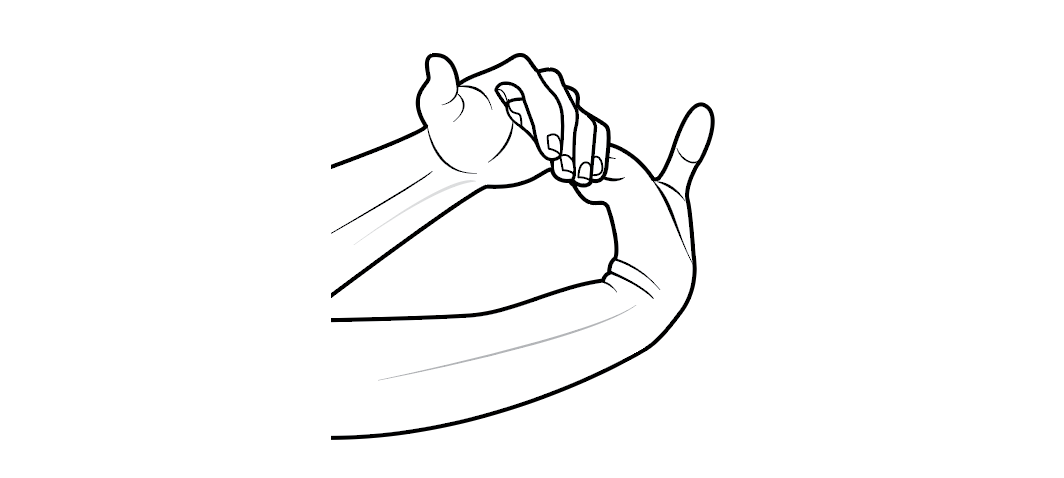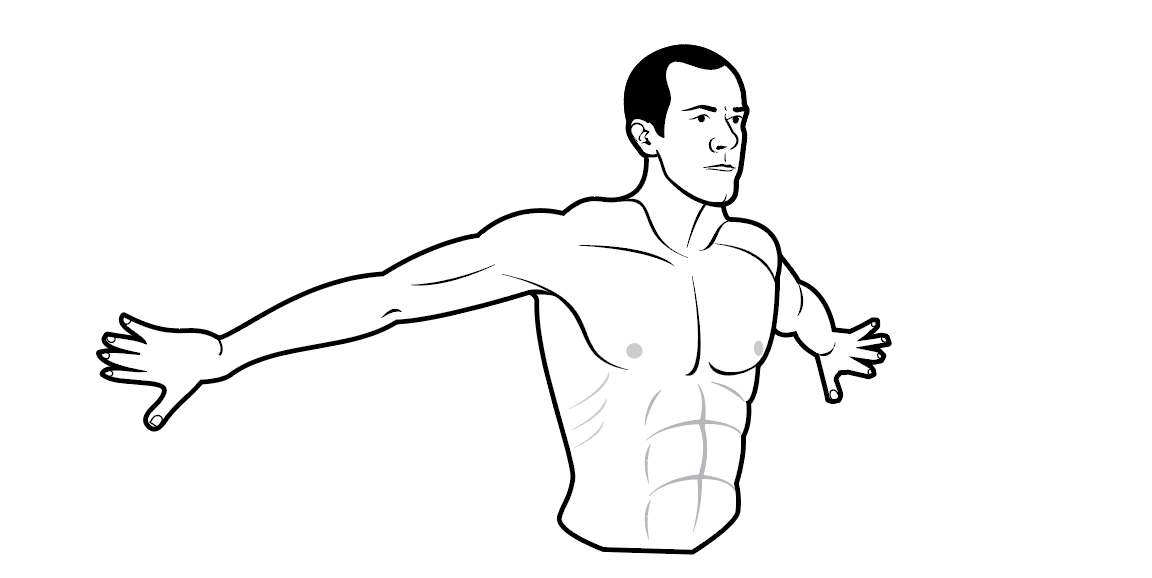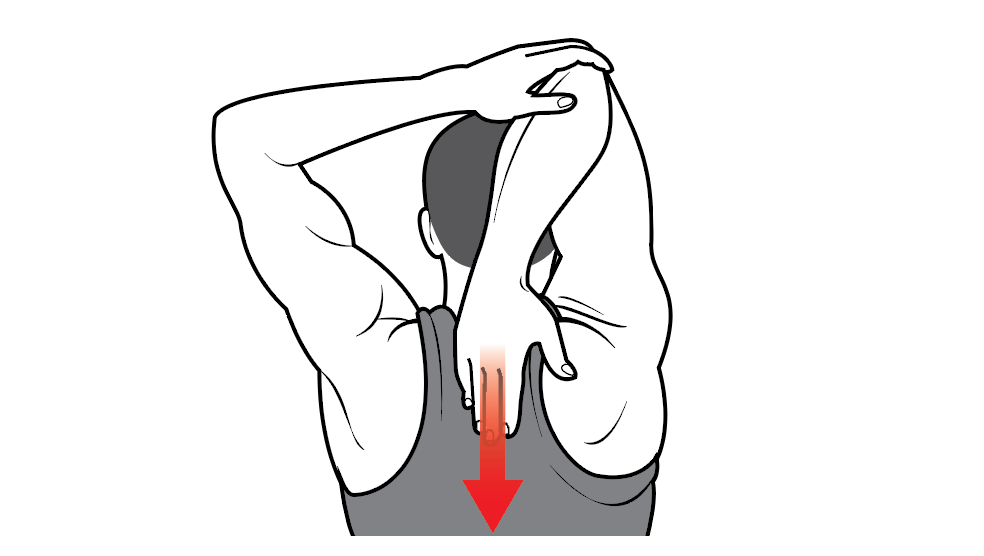Never Get Injured Again: Arms

'Photo Illustration by Graham Hutchings'
Key Parts
Rotator cuff muscles swivel the shoulders in their sockets.
Triceps, on the backs of the arms, help with pushing off and putting tension on trekking poles.
Lifting a heavy pack? Thank your biceps, which pull the lower arm upward.
Forearms include a host of interwoven muscles that control grip strength.
Elbows and wrists define how far the arms and hands can flex.
The Expert: Jolene C. Hardy
Hardy is an associate professor of orthopaedic surgery at the University of Arizona College of Medicine and a former ranger at Philmont Scout Ranch.
The Strategy
Arms assist in backpacking in four crucial ways: First, they act as a counterbalance to the momentum of the body—that’s why we swing them when we walk. Second, they control our trekking poles. “You have to push poles against the ground to improve stability and reduce impact,” Hardy says. Third, when hikes turn into scrambles, we need good arm strength and range of motion. And if falls happen? More often than not, it’s the arms that catch us.
Stretching and Mobility Exercises for Arms
Wrist Flexor Stretch

If you’re a trekking pole death-gripper, or have been busy scrambling, end the day with this stretch, which targets the forearms and releases the hand muscles.
Extend your right arm in front of your body and bend your wrist so that your fingertips are pointed up. Use your left hand to pull back gently on your fingers until you achieve a stretch in the muscles of your forearm. Hold for 30 to 60 seconds, then do the other wrist.
Biceps Stretch

Climbing and scrambling can be taxing on the biceps. Prevent soreness with this movement.
Lift both arms sideways, making a T and keeping your wrists in line with
your shoulders. With the palms facing down and your back straight, point the fingers behind you as you push your chest forward. You’ll feel it in your upper arms. Hold the stretch for 30 to 60 seconds.
Triceps Stretch

Thanks to muscle linkages, this stretch loosens up the muscles of the upper arm all the way to the shoulder.
Stretch your right arm straight overhead, bend your elbow, and reach your fingers toward the space between your shoulder blades (your palm should be facing your back). Use your left hand to pull back and down on your right elbow until you feel a stretch in the triceps. Hold for 30 to 60 seconds before switching sides.
Common Arm Injuries
Hand and Forearm Pain
The Problem Trekking poles can be a godsend, but misuse may cause hand cramping and forearm pain. “Your hips and legs are still the power source—your arms just augment things,” Cofield says. Forearm pain can also spring from climbing with handholds if your strength isn’t adequately developed.
The Fix Consciously loosen your grip when holding trekking poles. Using the straps will make you feel less prone to dropping the poles (bring your hand up through the loop for the best fit). Both before and after your hike, stretch the hand muscles and forearms with the wrist flexor stretch (above). If your hands are cold or your fingers tingly, loosen your shoulder straps and let your arms swing at your sides to restore blood flow.
Wrist Sprain or Fracture
The Problem A backpacking-related wrist injury is typically caused by a FOOSH, or a fall on an outstretched hand. Both ligament tears (aka, sprains) and fractures are accompanied by pain, swelling, and bruising. So, unless there’s an obvious deformity that indicates a broken bone, you may not be able to assess the severity of your condition in the field.
The Fix Hardy recommends rest, cold, compression, and elevation. “If you don’t have a sling, you can tuck the arm into your sternum strap,” she says. “You just don’t want it to hang down at your side. That’s going to cause more swelling, which will increase your pain.” If you’re able to move your fingers, periodically squeeze or pair of socks as you hike out to enhance circulation.
Sprained Elbow
The Problem While you’re more likely to injure your wrist while bracing in a forward or sideways fall, elbow sprains are more common if you slip backward. In that instance, the ligaments supporting the joint stretch past their normal range, resulting in sharp pain followed by soreness.
The Fix As with wrist injuries, use rest, cold, compression, and elevation to soothe an elbow injury in the field. Continue to hike if you’re able, but put your arm in a sling and use one trekking pole for stability. However, “if you’re unable to straighten or bend your elbow, then we’re going to be worried that this is more than just a sprain—it could be a dislocation or a fracture,” Hardy says. In that case, put your arm in a sling, hike out as soon as you can, and see a doctor for diagnosis.
Pro Tip: Ease the Impact
Trekking poles improve balance and reduce downhill strain on your knees by up to 25 percent. But you need to size them properly to get maximum benefit: Stand on level ground and grip the handle; your elbow should make a 90-degree angle. Lengthen poles on downhills to increase support, and shorten them on uphills for better climbing purchase. Your legs will thank your arms.